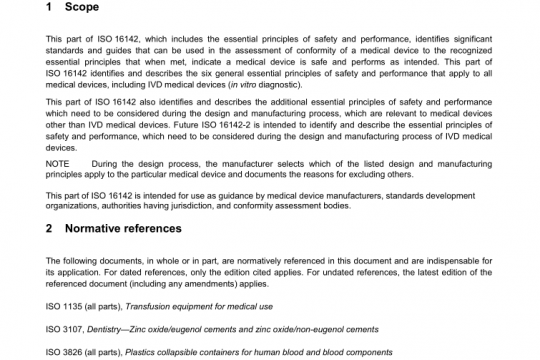AAMI HIT1000-4 (PS) pdf free download
AAMI HIT1000-4 (PS) pdf free download.Safety and effectiveness of health IT software and systems—Part 4: Application of human factors engineering.
5.2 Development stage optimizing the user experience through user-centered design and evaluation methods
5.2.1 Ensuring use-safety
5.2.1.1 The ability to deliver safe, high quality health care is closely tied to the quality of a health IT system’s user interface design (Payne et al., 2015). Simply stated, a poorly designed health IT system can induce use errors that could lead to patient injury and even death. For example, just as an intravenous infusion pump can be mis-programmed to deliver a morphine overdose, a user can enter the wrong medication order into a health IT system. Moreover, the interplay among multiple health IT systems may also lead to hazardous situations. As health IT systems become increasingly integral to healthcare delivery, it is even more important to minimize the chance of potentially harmful use errors and develop systems based on human factors engineering best practices and principles.
5.2.1.2 Mirroring the well-established approach to reducing risk that prevails in other industries (e.g., power generation, aviation, transportation, medical devices) developers shall follow a user interface design process that seeks to identify potentially harmful use errors and decrease their likelihood of occurrence. Fortunately, a use-safety focused design process typically also increases task effectiveness, work efficiency, and user satisfaction.
5.2.1.3 In the medical device industry, taking steps to reduce the chance of potentially harmful use errors is an important part of a broad-based risk management process. Such efforts make sense because medical devices can directly cause harm: use errors can lead to infection, laceration, burn, overdose, asphyxiation, and exsanguination, among others. In such cases, risk reduction techniques might include placing automatically activating guards on needles, insulating heat sources, rounding the edges of mechanical parts, shape- or color-coding tubes and associated ports, forcing functions of design and adding pressure sensors. The contribution to safety of these design features may be augmented by attention-getting warnings, clearly written and illustrated instructions, thorough training approaches and comprehensive testing throughout the entire health IT system lifecycle.
5.2.1.4 A similarly structured approach to identifying potential use errors using a health IT system should lead to mitigations. For example, a health IT system might employ one or more of the following: reducing the likelihood that a wrong medication will be ordered by presenting prescription information in a coherent structure, including bold screen titles, using colour to effectively highlight important information, and including helpful, non-distracting prompts. The user interface principles to be presented in AAMI’s planned Technical Information Report on HIT design principles promote the implementation of these features, along with others proven to reduce use-related risks associated with health IT systems.
5.2.2 Facilitating task effectiveness
5.2.2.1 While the priority is to ensure that user interactions with a health IT system are safe, it is also important to ensure that interactions are effective.
5.2.2.2 An effective health IT system not only enables, but also facilitates task performance. It helps various types of users to complete tasks easily and efficiently. Moreover, an effective health IT system is likely to gamer higher usability satisfaction ratings from users. Both formative and summative usability testing are considered best practices for health IT systems. Formative assessments can provide needed input to developers during design and coding phases. Summative testing, including in situ testing, can demonstrate adherence to usability objectives.AAMI HIT1000-4 (PS) pdf download.
Other IEC Standards
-

ANSI AAMI ISO 16142-1 pdf free download – non-IVD medical devices and guidance on the selection of standards
AAMI standards list DOWNLOAD -

ANSI AAMI ISO 16142-2 pdf free download – General essential principles and additional specifc essential principles
AAMI standards list DOWNLOAD


